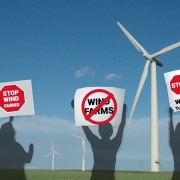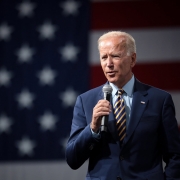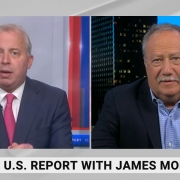The Rural Revolution a Welcome Counter to the Liberal Green Agenda
The current deceleration of globalism can herald either a greater period of nationalism, with its tendency towards authoritarianism and xenophobia, or we could return to a more decentralized political system that comports with both American and Canadian traditions and popular preferences.
For some, the nationalist call is irresistible, even if it tramples on local rights and promotes autocratic power from Ottawa or Washington. This was seen particularly during COVID, notably in Canada, with centrally directed assaults on the rights of pandemic dissenters, ranging from the forced cutoff of private bank accounts in Canada, or in the American censorship regimes designed by a partnership of the Washington bureaucracy and the tech oligarchy.
The abating of the pandemic seems unlikely to curb the centralist fever. In Canada, the federal government continues to seek more control over everything from the Ontario Greenbelt to basic energy policy. This all sets the stage for an expanding conflict between the provinces and Ottawa, as the distinct priorities of various regions sometimes conflict with priorities set out by national elites, sometimes with the connivance of large corporate interests.
Much the same is occurring in the United States. In an almost evenly divided legislative branch, U.S. President Joe Biden has managed to expand federal power to unprecedented levels. Some of this has been done through the Stalinist-style bloc voting by Democrats in Congress, or simply by executive fiat. With the GOP in a slight majority in the House, Biden will almost inevitably expand his rule by executive order in the next two years.
But the situation is far from helpless. In Canada, there is growing resentment towards federal power. Energy and agricultural policies that follow the globalist green script may appeal to denizens of Toronto’s towers and swankier neighbourhoods, but can be regarded with horror by farmers in Manitoba or oil-riggers in Alberta. Suburban and exurban residents may be less than thrilled by Ottawa rumbling to force densification — hardly a natural fit for a country with an enormous surplus of land.
Some may see these localist attitudes as defending dying ways of life, but the demographic story tells us something very different. In Canada, people are dispersing, with most growth, even before the pandemic lockdowns, in the outer exurbs and smaller metropolitan areas, particularly in Ontario. After decades of moving to larger cities, data shows that while the population continues to urbanize, people are often moving to smaller communities.
As demographer Wendell Cox has demonstrated, Canadians are moving primarily to exurbs and suburbs, some closer to the big cities, but some quite distant. This was driven largely by high housing prices, and the increase in remote work by Canadians, which sparked a move away from the largest metropolitan areas, particularly ultra-expensive cities like Vancouver and Toronto. Even the Maritimes, long losers in the demographic sweepstakes, has reversed its long negative internal migration, attracting migrants from denser, more urbanized centres.
Read the rest of this piece at National Post.
Joel Kotkin is the author of The Coming of Neo-Feudalism: A Warning to the Global Middle Class. He is the Roger Hobbs Presidential Fellow in Urban Futures at Chapman University and Executive Director for Urban Reform Institute. Learn more at joelkotkin.com and follow him on Twitter @joelkotkin.
Homepage photo: composite with photo by Tom Corser via Wikimedia under CC 3.0 License




 Gage Skidmore, used here under CC 2.0 License
Gage Skidmore, used here under CC 2.0 License
 Thomas Hawk
Thomas Hawk

